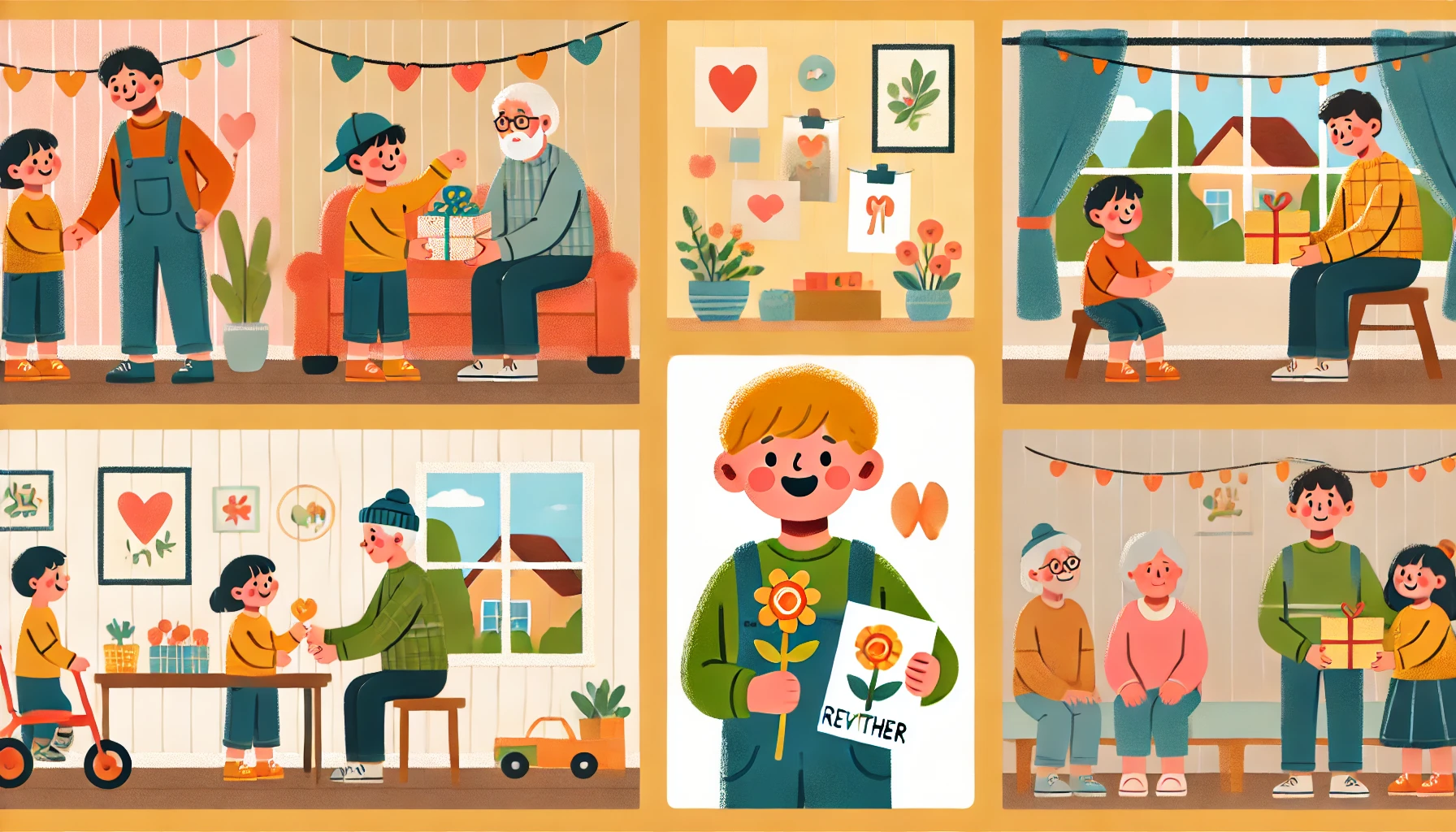How to Teach Young Children About Kindness and Helping Others
Teaching young children about kindness and helping others fosters empathy, compassion, and strong social skills. When kids learn to share, express gratitude, and assist those in need, they develop a positive attitude toward others and the world around them. Parents can encourage kindness through daily actions, role-modeling, and engaging activities. In this article, we’ll explore practical ways to help children understand and practice kindness.
Why Teaching Kindness is Important
- Encourages empathy – Helps children understand and care about others’ feelings.
- Builds positive relationships – Teaches kids how to be a good friend and family member.
- Promotes cooperation and teamwork – Helps children work well with others.
- Boosts self-esteem and happiness – Shows kids that kindness makes them and others feel good.
- Creates a more compassionate world – Encourages kids to make a difference in their communities.
1. Model Kindness in Everyday Life
Children learn kindness by watching how adults treat others.
Activity Idea:
- Say “Thank you” and “Please” in daily conversations.
- Show kindness to others: “Let’s hold the door open for that person.”
- Speak kindly about others and avoid negative comments.
What Kids Learn:
- That small acts of kindness make a big difference
- How to treat others with respect and care
- The importance of setting a good example
2. Teach Children to Recognize and Express Kindness
Helping kids understand what kindness looks like makes it easier for them to practice.
Activity Idea:
- Create a “Kindness Jar”, where kids write down kind actions they did each day.
- Read books about kindness, like Have You Filled a Bucket Today? by Carol McCloud.
- Play a kindness matching game, where kids match actions (like “sharing a toy”) to emotions (like “feeling happy”).
What Kids Learn:
- That kindness comes in many forms (words, actions, helping others)
- How being kind makes people feel good
- The importance of noticing and celebrating kind behavior
3. Encourage Sharing and Helping Others
Teaching kids to share and help builds cooperation and generosity.
Activity Idea:
- Role-play sharing scenarios with toys and snacks.
- Set up a “Helping Hands” chart, where kids track when they help a sibling, parent, or friend.
- Do a family volunteer activity, like donating toys or making cards for nursing home residents.
What Kids Learn:
- That sharing helps build friendships
- How helping others makes the world a better place
- The importance of generosity and cooperation
4. Teach Children to Use Kind Words
Words have the power to uplift and encourage, and kids should learn how to use them positively.
Activity Idea:
- Play a “Kind Word Challenge”, where kids come up with compliments for family members.
- Teach kids how to apologize sincerely: “I’m sorry for taking your toy. Can I make it better?”
- Encourage using kind phrases like “You did a great job!” and “I’m proud of you.”
What Kids Learn:
- How words can make others feel happy or hurt
- The importance of choosing words carefully
- That kindness includes speaking positively to and about others
5. Show How Kindness Can Solve Problems
Kindness helps children navigate conflicts in a peaceful and respectful way.
Activity Idea:
- When kids argue, ask: “How can we solve this with kindness?”
- Encourage taking turns and compromise in play.
- Use real-life examples of how kindness can fix misunderstandings.
What Kids Learn:
- That kindness can help resolve disagreements
- How to use empathy to understand others’ feelings
- The importance of listening and compromising
6. Encourage Random Acts of Kindness
Surprising others with kindness makes giving even more special.
Activity Idea:
- Leave a kind note for a family member or friend.
- Help a neighbor by watering their plants or carrying groceries.
- Make homemade gifts or drawings for teachers, friends, or relatives.
What Kids Learn:
- That kindness can be spontaneous and fun
- How small gestures can brighten someone’s day
- The joy of giving without expecting anything in return
7. Praise and Reinforce Kind Behavior
Recognizing when children show kindness encourages them to continue.
Activity Idea:
- Say, “That was so thoughtful of you to help your friend!”
- Create a “Kindness Tree”, where kids add a leaf for each kind act they do.
- Ask, “How did it feel to be kind today?” to reinforce self-awareness.
What Kids Learn:
- That kindness is valued and appreciated
- How being kind makes them feel happy and fulfilled
- The motivation to keep practicing kindness daily
8. Teach Kids to Be Kind to Themselves
Self-kindness is just as important as kindness to others.
Activity Idea:
- Encourage kids to talk positively about themselves: “I am smart, I am kind, I am loved.”
- Teach kids to take breaks and practice self-care when they feel overwhelmed.
- Remind children that making mistakes is okay and part of learning.
What Kids Learn:
- That being kind to themselves helps them be kinder to others
- How to practice self-compassion and forgiveness
- The importance of a positive self-image
Final Thoughts
Teaching young children about kindness and helping others helps them develop empathy, compassion, and positive social habits. By modeling kindness, encouraging generosity, and celebrating kind actions, parents can guide children in building a foundation for a more caring and connected world.
